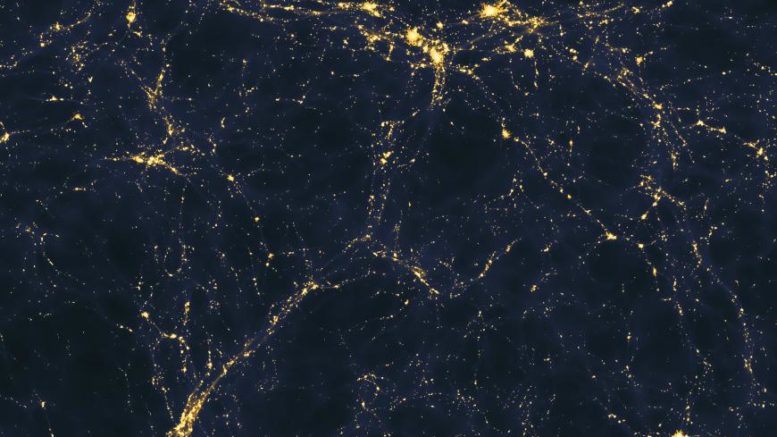In the standard model of cosmology, the total mass–energy of the universe is said to contain 5% of ordinary matter and energy, 27% of dark matter, and 68% of what is known as dark energy. In this article, we will be taking a look at the matter that makes up 27% of the matter in the universe. We will be following this article up in a few weeks with an article about Dark Matter, so stay tuned for that and much more!
In physical cosmology and astronomy, dark energy is an unknown form of energy which is hypothesized to permeate all of space, tending to accelerate the expansion of the universe. As observations in the 1990s indicated that the universe was and continues to expand at an accelerating rate, there needed to be a reason why. Dark energy is the most accepted hypothesis to explain this expansion, and it is interesting to note that the density of this energy is very low. This density is so low in fact that it is much lower than the density of ordinary matter or even dark matter within galaxies. Due to the expanse of the universe and its uniformity, it is said that dark energy dominates the mass–energy of the universe.
Scientists have proposed 2 forms for dark energy to take, which include the cosmological constant and scalar fields. The cosmological constant represents a constant energy density filling space homogeneously; whereas the properties of scalar fields have dynamic quantities whose energy density can vary in time and space.
Evidence of existence
The evidence for its existence is indirect but comes from three independent sources:
- Distance measurements and their relation to redshift, which suggest the universe has expanded more in the last half of its life, than it did during the second half.
- The theoretical need for a type of additional energy that is not matter or dark matter to form the observable flat universe. This is because of the absence of any detectable global curvature.
- Measures of large-scale wave-patterns of mass density in the universe.
There are other means of evidence, which includes:
- Supernova studies have shown that the universe is expanding
- Cosmic Microwave Background measurements indicate that the universe is close to flat. For the shape of the universe to be flat, the mass-energy density of the universe must be equal to the critical density.
- Large-scale Structure theory which governs the formation of structures in the universe suggests that the density of matter in the universe is only 30% of the critical density.
- The Late-time integrated Sachs–Wolfe effect is a direct signal of dark energy in a flat universe and is a result of the accelerated cosmic expansion causes gravitational potential wells and hills to flatten as photons pass through them, producing cold spots and hot spots on the CMB aligned with vast supervoids and superclusters.
- Observational Hubble Constant Data tracks the redshift of early cosmic objects and have tried to learn more about this subject.
- Direct Observation Attempts in a laboratory have failed to detect a new force.
Theories To Explain Existence
Because of its status as a hypothetical force with unknown properties makes it a very active target of research. Scientists have taken many different and unique ways to research and tackle the problem over the years. These unique methods include but are not limited to modifying the prevailing theory of gravity, attempting to pin down the properties of dark energy, and finding alternative ways to explain the observational data.
- The Cosmological Constant has negative pressure equal to its energy density and so causes the expansion of the universe to accelerate. Moreover, it is the most economical solution to the problem of cosmic acceleration
- Quintessence is another theory that scientists have developed to help explain potential differences in dark energy in areas around the universe.
- Interacting Dark Energy attempts to come up with an all-encompassing theory of both dark matter and dark energy as a single phenomenon that modifies the laws of gravity at various scales.
- Variable Dark Energy Models show that dark energy density might have varied in time during the history of the universe.
References
Durrer, R. (2011). “What do we really know about Dark Energy?”. Philosophical Transactions of the Royal Society A: Mathematical, Physical and Engineering Sciences. 369 (1957): 5102–5114. arXiv:1103.5331.
Further Reading
- In Our Time at the BBC
- Studies on the subject at CERN
- Dennis Overbye (November 2006). “9 Billion-Year-Old ‘Dark Energy’ Reported”. The New York Times.
- “Mysterious force’s long presence” BBC News online (2006) More evidence regarding the cosmological constant

Be the first to comment on "What Is Dark Energy?"